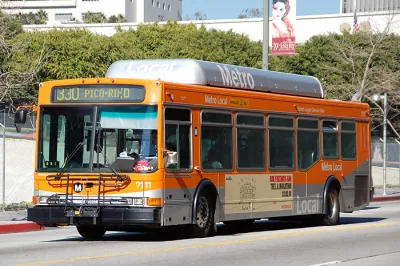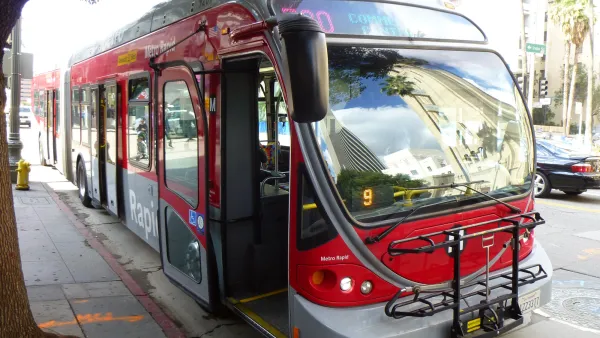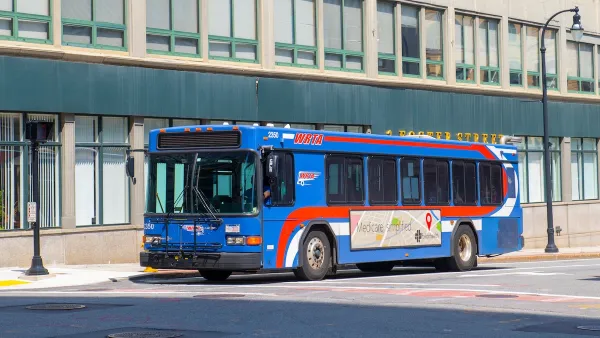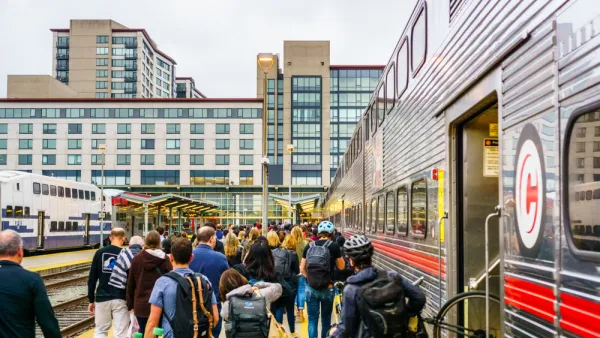With many U.S. transit agencies facing severe gaps in service and budget shortfalls, some advocates argue that improved service matters more than free fares.

Despite a "growing movement" to make public transit fare-free, Henry Grabar argues in a piece for Slate that getting rid of fares would not help the poorest and most underserved transit riders. Jarrett Walker, a Portland-based transit planner and author of Human Transit, agrees. "I’ve heard people describe the free fare movement as being a movement for free, terrible service, and that’s how the trade-off ends up working if you expect this to happen inside the budget of an impoverished American transit agency." While research shows that low-income riders do use transit more when offered discounts, they also "overwhelmingly said reliability was a bigger concern than affordability."
Advocates for free transit argue that it's a matter of priorities. The Los Angeles County Metropolitan Transportation Authority, for example, "spends many times its bus budget on capital projects and highways, funds that could easily be reapportioned to bulk up its transit offerings." Yet "[m]ost transit experts support targeted discount programs for low-income riders, like the one operated by King County, Washington, which runs transit service in Seattle. They also admit they haven’t done a great job helping people access such programs, a point in favor of a 'free school lunch' analogy; benefits are only good if people can get them." Improving accessibility and service, writes Grabar, could do more to increase ridership than free fares. Ultimately, "[r]iders say they want better service, not cheaper service."
Steven Polzin also wrote a detailed cost-benefit analysis of reduced- and free-fare transit for Planetizen in 2018.
FULL STORY: The Problem With Free Transit

National Parks Layoffs Will Cause Communities to Lose Billions
Thousands of essential park workers were laid off this week, just before the busy spring break season.

Retro-silient?: America’s First “Eco-burb,” The Woodlands Turns 50
A master-planned community north of Houston offers lessons on green infrastructure and resilient design, but falls short of its founder’s lofty affordability and walkability goals.

Delivering for America Plan Will Downgrade Mail Service in at Least 49.5 Percent of Zip Codes
Republican and Democrat lawmakers criticize the plan for its disproportionate negative impact on rural communities.

Test News Post 1
This is a summary

Test News Headline 46
Test for the image on the front page.

Balancing Bombs and Butterflies: How the National Guard Protects a Rare Species
The National Guard at Fort Indiantown Gap uses GIS technology and land management strategies to balance military training with conservation efforts, ensuring the survival of the rare eastern regal fritillary butterfly.
Urban Design for Planners 1: Software Tools
This six-course series explores essential urban design concepts using open source software and equips planners with the tools they need to participate fully in the urban design process.
Planning for Universal Design
Learn the tools for implementing Universal Design in planning regulations.
EMC Planning Group, Inc.
Planetizen
Planetizen
Mpact (formerly Rail~Volution)
Great Falls Development Authority, Inc.
HUDs Office of Policy Development and Research
NYU Wagner Graduate School of Public Service





























